DEFINITION OF TERMS:
- KEYSTONE means they are listed by National Wildlife Federation as core plants for a wildlife garden in my ecoregion (Ecoregion 8).
- NOT QUITE NATIVE means they are slightly out of range but adjacent to NYS as determined by GoBotany and NY Flora Atlas.
- Otherwise the plant is a NY-native or native to the area noted.
SOUTHEAST NATIVE: Indian pink (Spigelia marilandica)
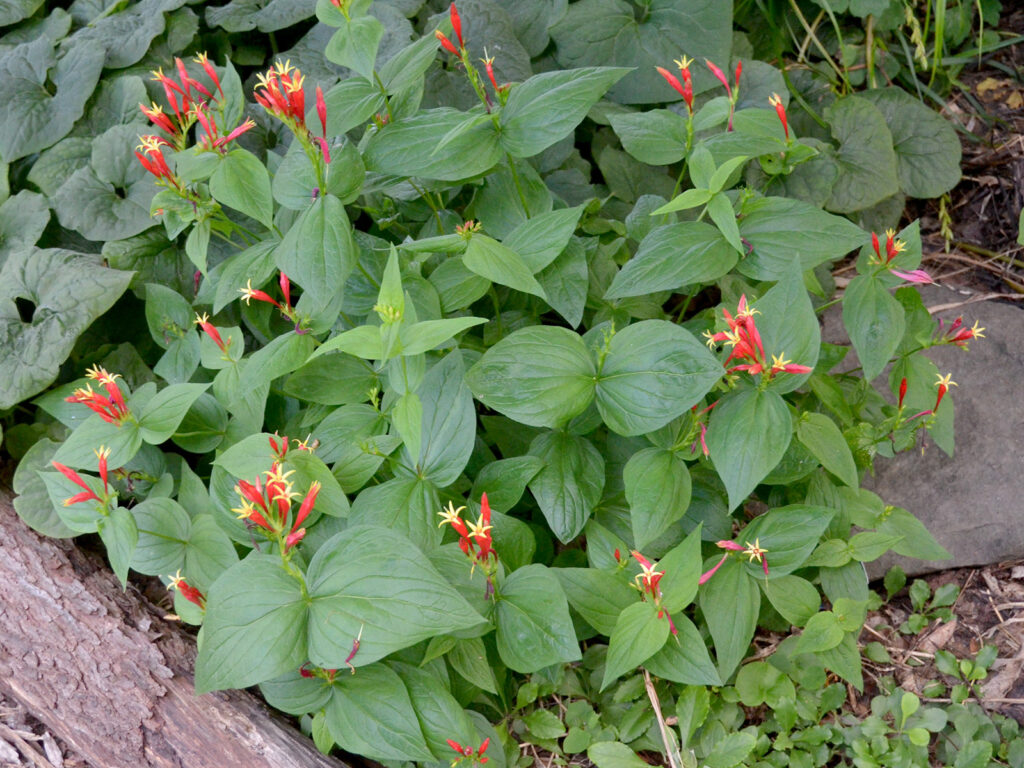
A spectacular flower.
This has done well, though it hasn’t spread or created any seedlings.
it’s native to the Southeast — ironically, not even to Maryland. I think I must have bought it at the Millersville Native Plant conference.
Wildlife: Hummingbirds
- Learn more:
- Wildflower Center: Indian pink
Woodland poppy (Stylophorum diphyllum) (NOT QUITE NATIVE)
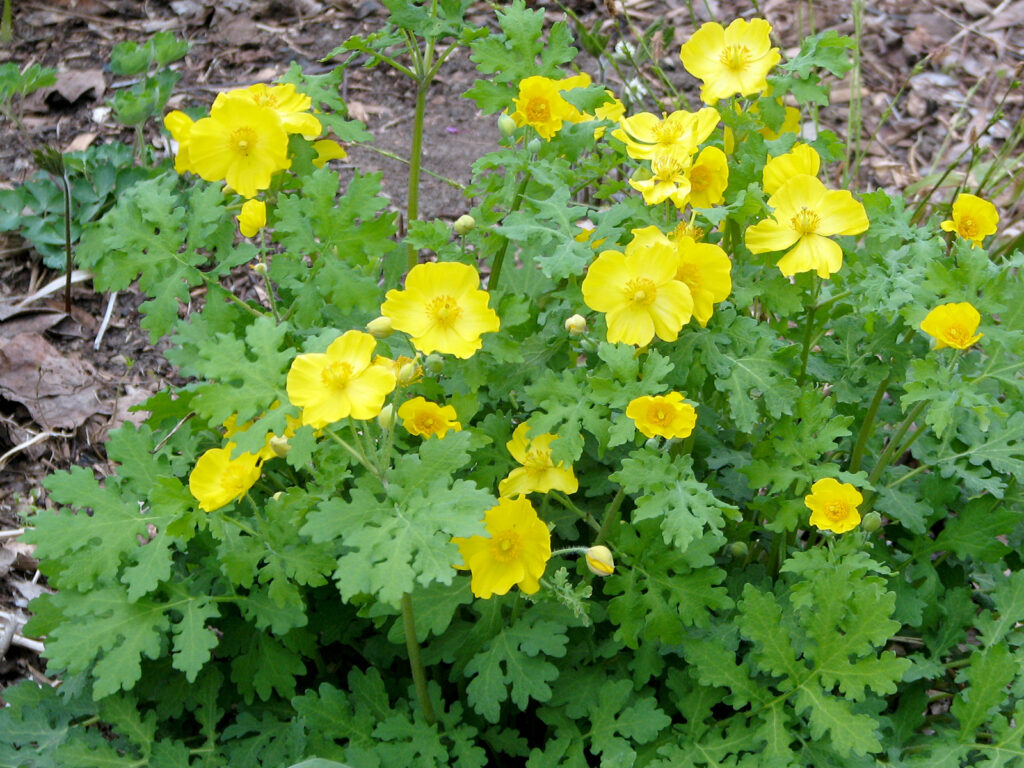
This is a pretty plant with bright yellow flowers. Its only fault is that it spreads quite a bit, evidently by ants. Cullina recommends removing the seed pods before they’re dispersed. This is a task that would be well worth the effort, but I haven’t managed to do it yet.
CAUTION: There is also an invasive non-native look-alike: greater celandine (Chelidonium majus). The leaves are similar, but the flowers are somewhat less so, though still yellow. The non-native plant have four petals, too, but they’re narrower and not as attractive.
Wildlife: Seeds for chipmunks
- Learn more:
- Wildflower Center: Woodland poppy
- Wild Ones – River City Grand Rapids chapter Tale of two poppies – How to distinguish between the native and non-native woodland poppies:
Early meadow rue (Thalictrum dioicum)
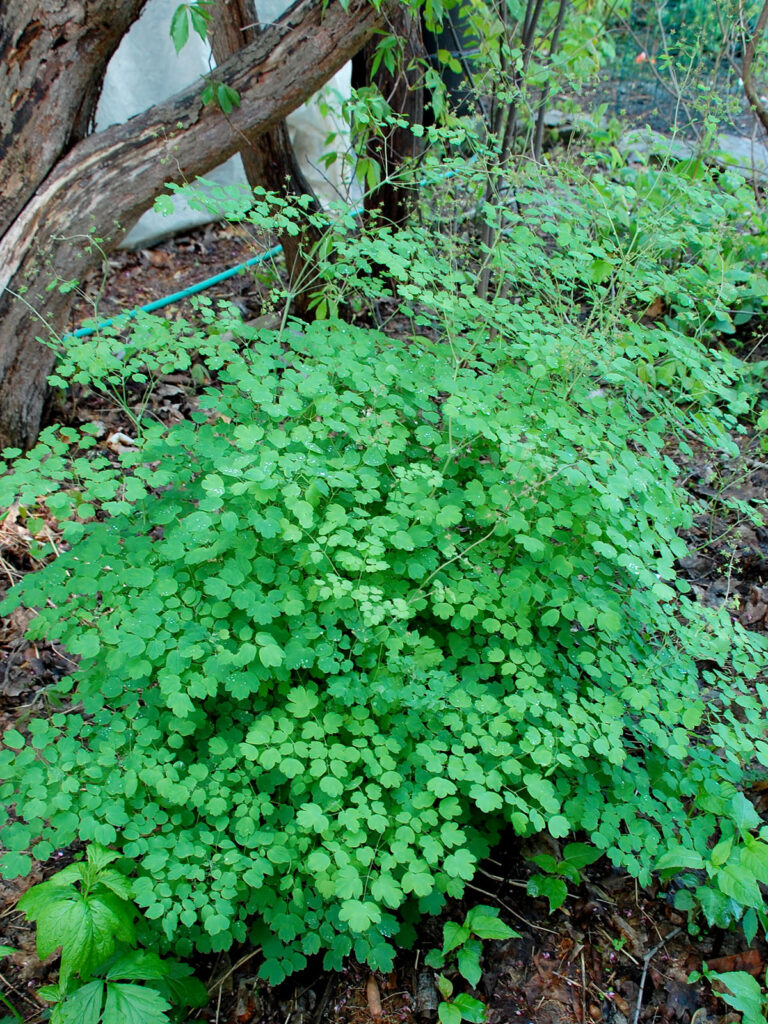
I love the foliage, but we really got it for the little flowers that hang down.
We always called this the Earring Plant when we were hiking in national parks.
- Learn more:
- Wildflower Center: Early meadow rue
Tall meadow rue aka King of the meadow (Thalictrum pubescens)
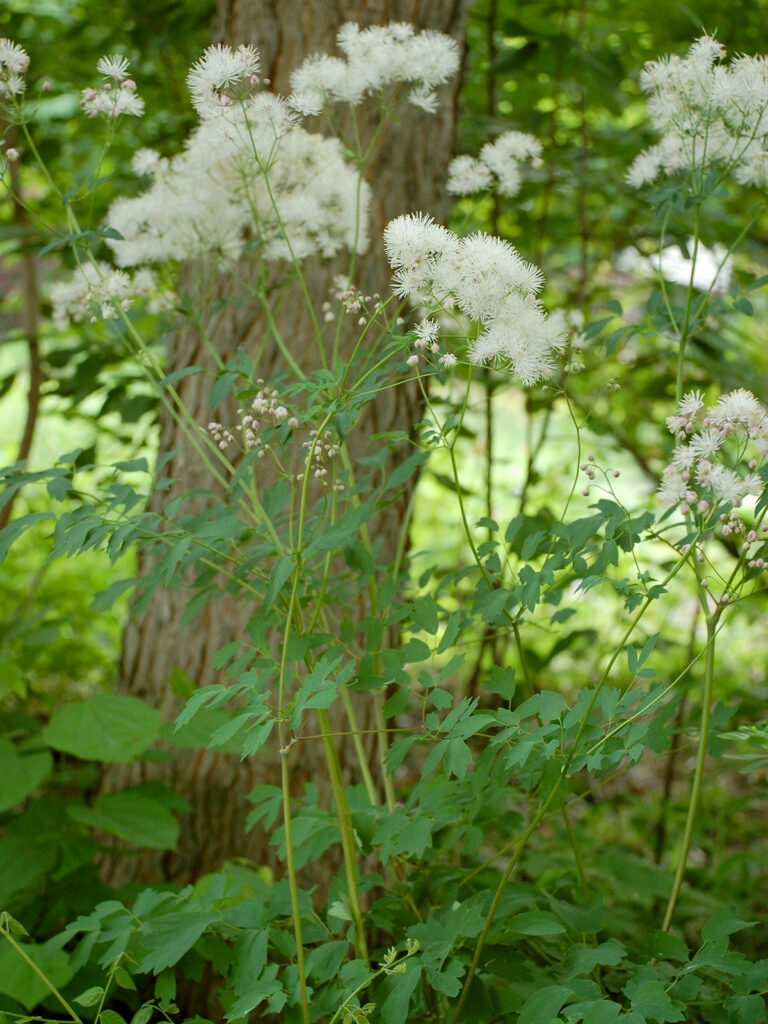
This is the rue we have in the front yard under the Kentucky coffee tree. It has a nice foamy appearance and is easy to grow.
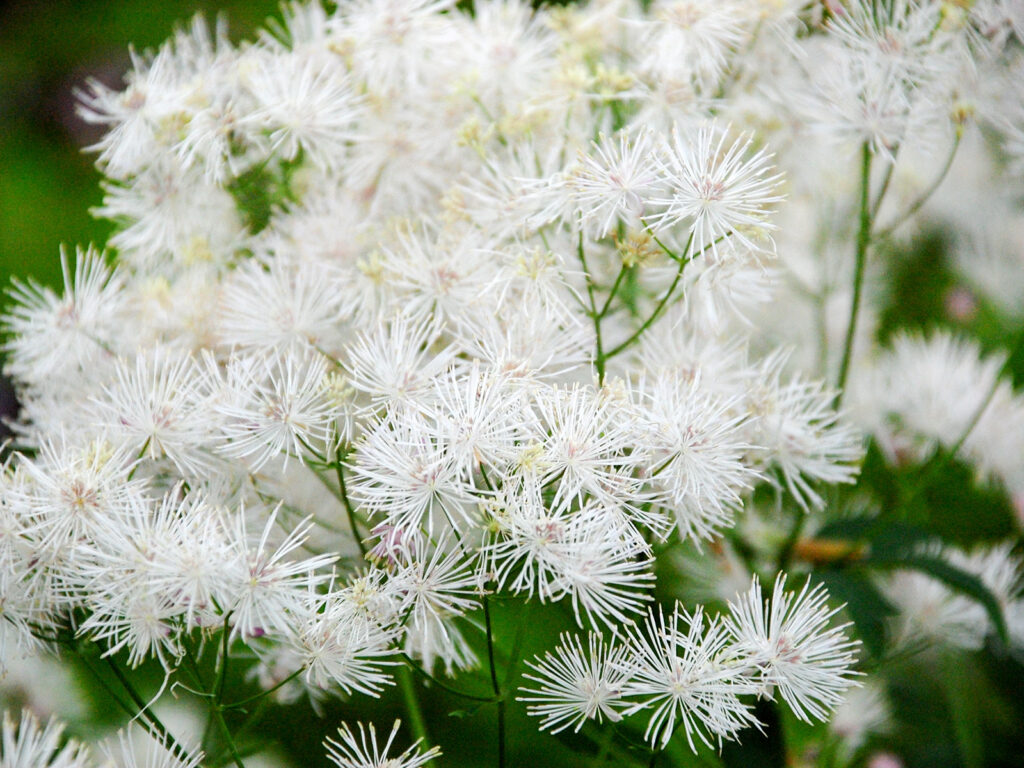
Here’s a closeup of the flowers.
Wildlife: Butterflies, bees
- Learn more:
- Wildflower Center: Tall meadow rue
Rue anemone (Thalictrum thalictroides)
I’m not sure which of my Thalictrum this one is. I’ll have to check these more carefully this year (2022).
- Learn more:
- Wildflower Center: Rue anemone
Running foamflower (Tiarella cordifolia)
The difference between running foamflower (Tiarella cordifolia) and clumping foamflower (T. wherryi) is that running foamflower has um … runners!
To really appreciate this plant, it’s nice to see it in a larger grouping, and starting with one plant, it finally has created a nice patch. After the flowers die, the foliage is still very attractive.
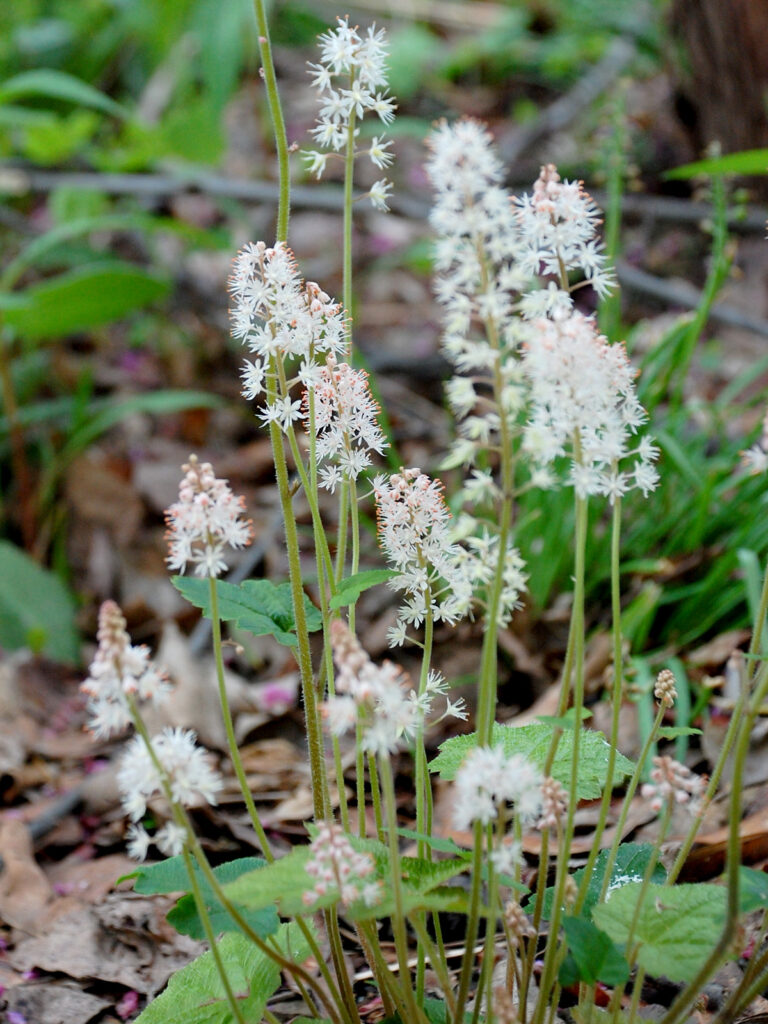
- Learn more:
- Wildflower Center: Running foamflower
Clumping foamflower (Tiarella wherryi)
Syn: Tiarella cordifolia var. collina
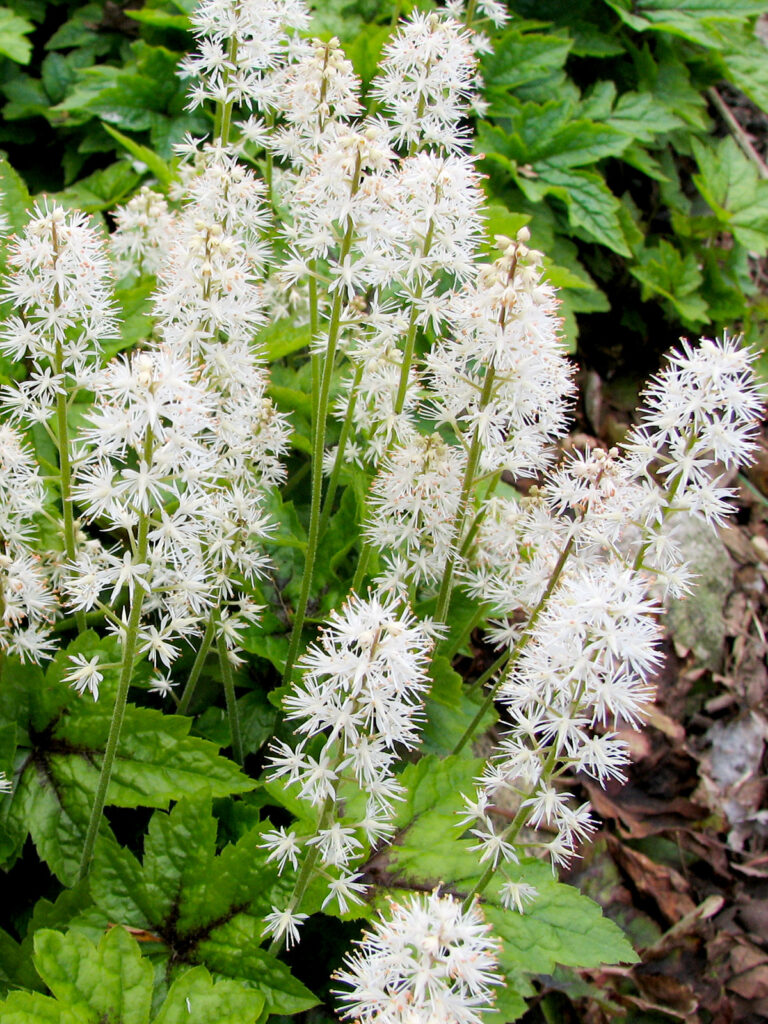
Clumping foamflower (Tiarella wherryi) doesn’t spread by runners. I love the foamy-looking flowers in the spring. The leaves are a bit different from the running foamflower.
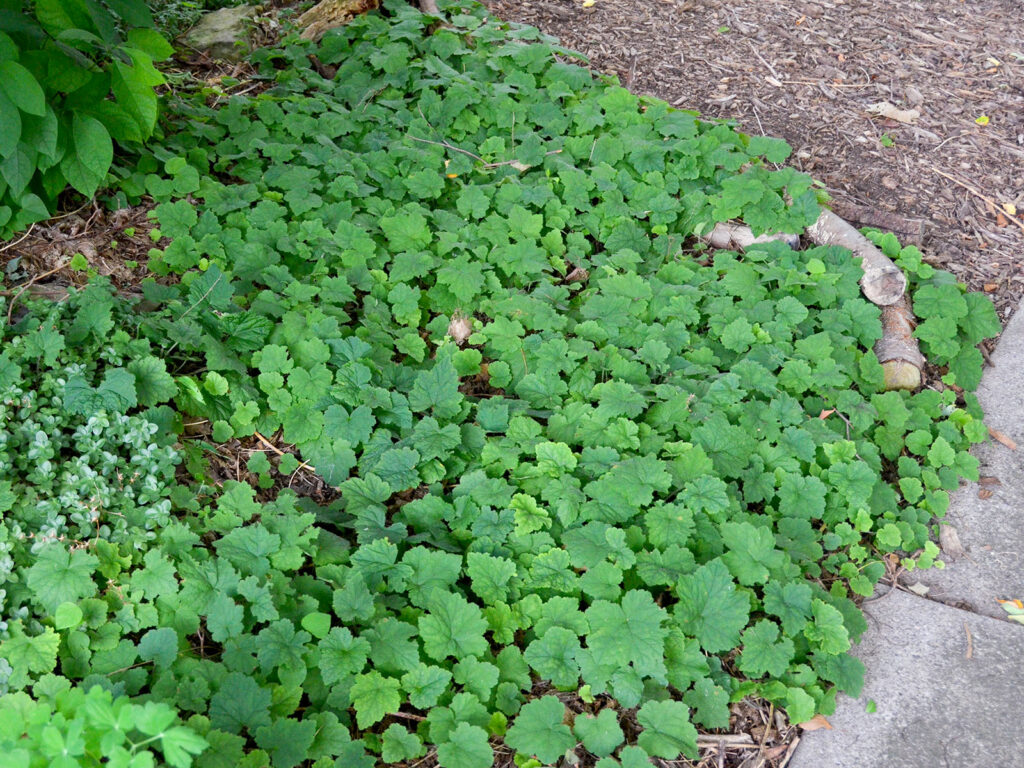
Foamflower foliage is a wonderful ground cover, too!
Note: I’m not sure which of the two kinds of foamflower this is.
- Learn more:
- Wildflower Center: Clumping foamflower
Spiderwort (Tradescantia virginiana OR T. ohiensis??)
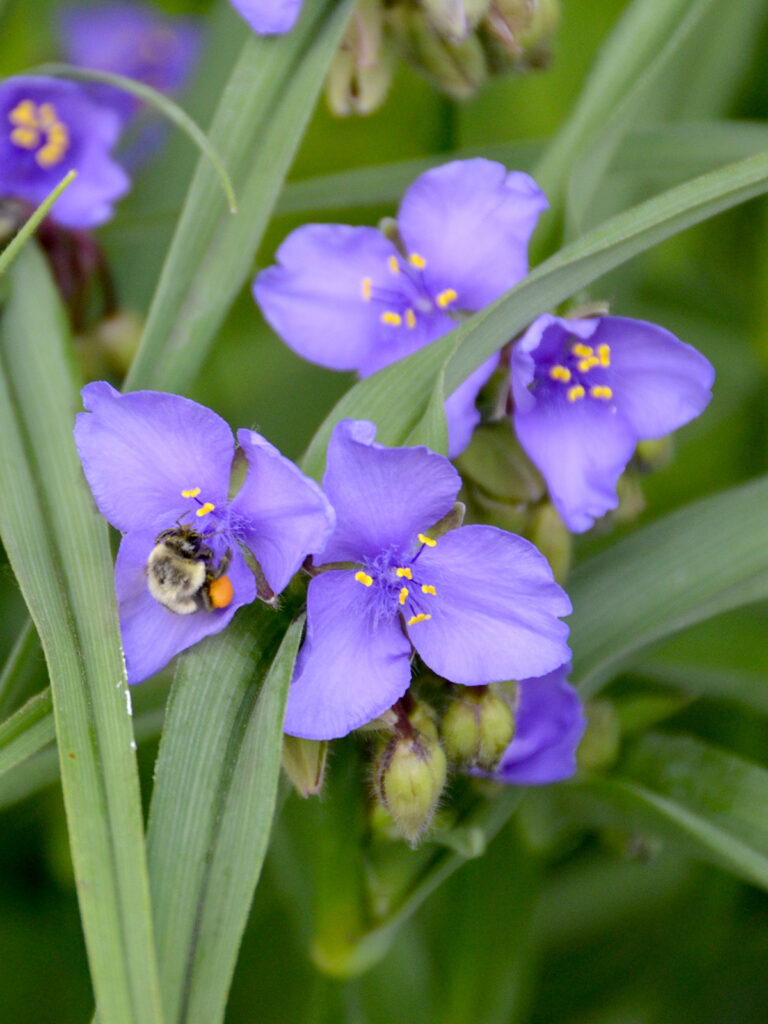
NOTE: Trying to figure out which. T. virginiana is “Not quite native” and T. ohiensis is native.
When I first planted this many years ago, it became one of my favorite plants. I bought several cultivars with different colored flowers. I’m hoping I have some of the plain species, but at this point I have no way of telling.
Then I noticed it spreading everywhere, so I’m trying to keep it under control by pulling up a lot of the extra plants I see.
One of my favorite morning experiences is visiting the patches of spiderwort to hear all the pleasant buzzing of all the bees enjoying its nectar.
Wildlife: Bees
** SPECIAL VALUE TO NATIVE BEES **
** SPECIAL VALUE TO BUMBLE BEES **
- Learn more:
- Wildflower Center: Spiderworts
